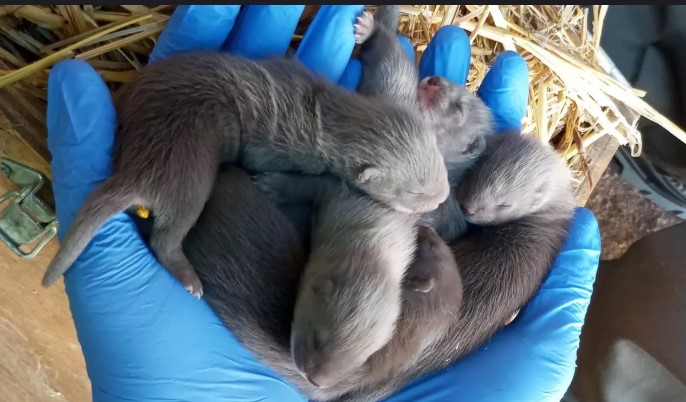The situation of the European Mink (Mustela lutreola) in Spain is critically precarious. Indeed, it is the most endangered mammal in Europe, with an estimated 142 individuals remaining in the wild in Spain, according to data from the Ministry for Ecological Transition. Now, a new advancement in a captive breeding program offers a glimmer of hope, as 17 healthy offspring have been born, which will contribute to bolstering the very small Spanish population.
The Foundation for Research in Ethology and Biodiversity (FIEB) announced the birth of these 17 European Mink kits last May. This season has brought a beacon of hope, as an average of four young per litter were born, and one female even successfully raised five offspring. “It is a significant success for the recovery program,” FIEB officials stated in a press release. At birth, the kits have a characteristic pearly gray color, which they lose after a few weeks to adopt the chocolate brown fur typical of the adult European Mink.
Threats from the American Mink and River Pollution
The main threats to their survival are the competition from the American Mink, an invasive species that has displaced the European Mink, and the pollution of aquatic ecosystems, particularly the rivers where this species relies on a clean and healthy habitat for its feeding and reproduction.
The FIEB Foundation (Foundation for Research in Ethology and Biodiversity) is one of the institutions dedicated to the conservation of the European Mink. In an effort to save this iconic species from extinction, Spanish researchers have successfully developed the first effective artificial insemination protocol specifically designed for this species. This scientific milestone, achieved within the framework of the project “Development and Application of Assisted Reproduction Techniques for the Conservation of the European Mink,” represents a before and after in the conservation programs of this mustelid, according to its proponents. It is supported and funded by the Ministry for Ecological Transition.
In more than two years of research, the scientific team has managed to decipher the complex reproductive behavior of the European Mink, which is characterized by pronounced female selectivity and the aggressiveness of some captive-bred males, factors that severely limit the success of traditional breeding programs.
Among the most significant advancements is the development of groundbreaking techniques for non-invasive monitoring of reproductive activity through fecal hormone analysis, a method that allows for precise determination of optimal insemination times without causing additional stress to the animals. In parallel, researchers have conducted a comprehensive characterization of sperm quality parameters and established specific reproductive standards for the species.




